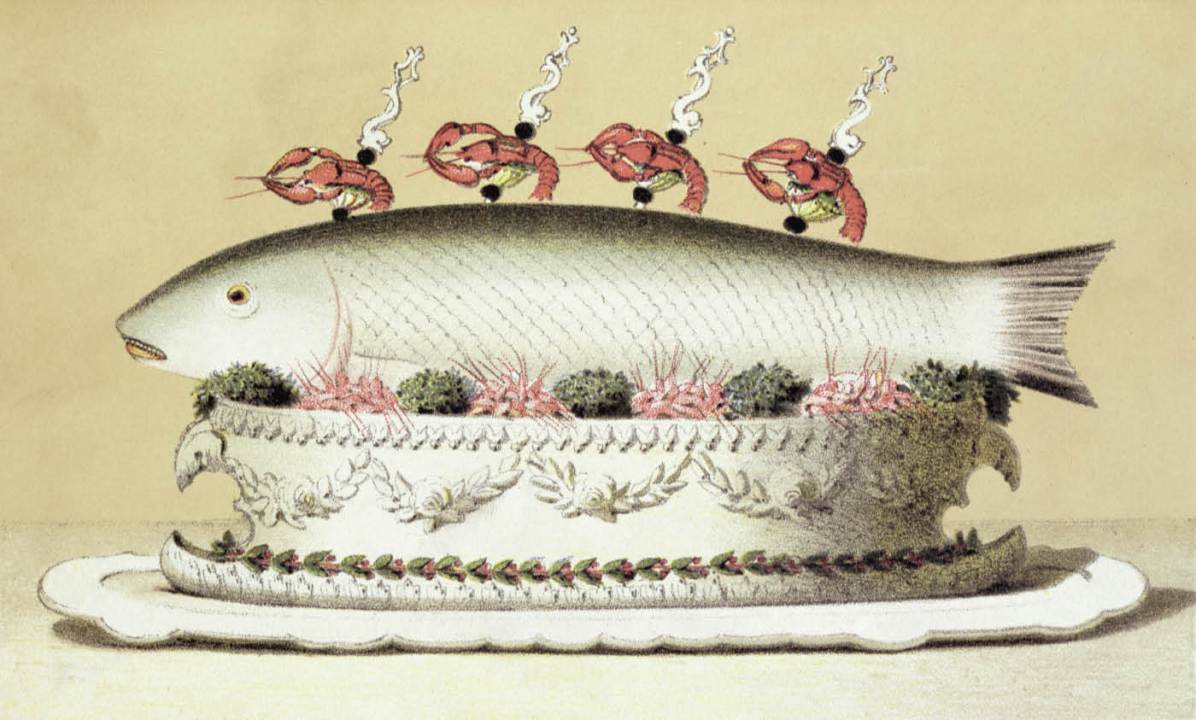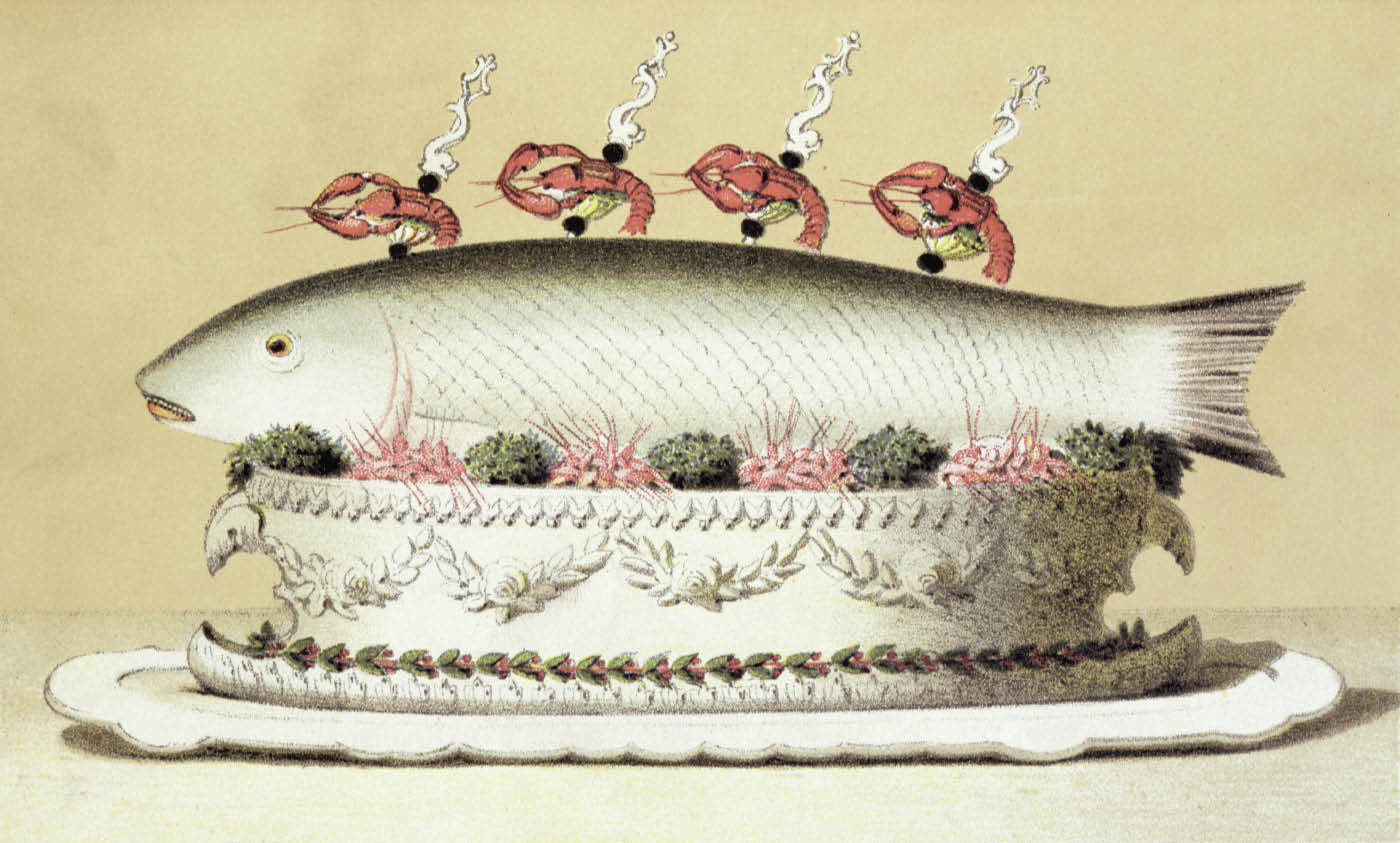It may not be quite true that the next best thing to eating good food is reading about it, but undeniably food writing has its considerable pleasures. You’ve got it all there: sex and sensuality (the link between the appetites hardly needs spelling out), social history, the loving acquaintance with ingredients . . . and recipes. The Penguin Great Food series — a selection of 20 delightful, lightweight (we’re talking wrist-strain, not subject), prettily jacketed works by the finest food writers — is a feat.
Just selecting 20 authors from the 17th century to now is difficult in itself. Do you go for good prose (Alice B. Toklas, Gertrude Stein’s companion, was a hoot as well as a lovely writer), influence (Brillat-Savarin, or Brilliant Savarin, as the homeware chain, Butlers, describes him); historic importance; famous writers who happened to write about food (Charles Lamb, who didn’t so much write about food, as about appetite and addiction) or just admirable recipe compilers?
The answer is, all of the above. The series embraces selections from which you can cook really well (Claudia Roden), authors who provide recipes but are riveting for their historical interest (like Alexis Soyer, the Reform Club chef, who made a culinary contribution to the Crimean war) or authors who have food as an occasional subject matter and aren’t actually cooks at all. You’d fare badly if you took Alexandre Dumas’s Alphabet for Food Lovers as a guide to making anything (his recipe for English dumplings, say), but it’s charming, nonetheless. He acquired notoriety for an early article on bear steak, and here he provides a recipe for bear paws: marinaded, stewed, grilled and finally served with a piquant sauce.
As for Samuel Pepys, he doesn’t give a single recipe for anything and some of the extracts from the diaries included here are put in just for the fun of it, like his conversation with some interested matrons about how to solve his childlessness (sage juice was one suggestion). He does give a fascinating insight into the eating and drinking habits of the times, though. God, they binge-drank. And everyday fare was a good deal more extensive than we might think; centuries before the River Café Cookbook introduced the middle classes to bottarga, there was Pepys, ‘eating botargo and bread and butter until midnight, it being moonshine’. Gervase Markham, earliest of the authors, may have been a bit of a prig, but he did demonstrate the familiarity of the 17th- century English cook with what we’d now think of as exotic ingredients. His savoury pig’s-foot pudding includes currants, spices, endive and marigold flowers. But then, as Claudia Roden remarks,
the Crusaders, orientalised by years spent in the Levant, brought home the ways of handling [Eastern ingredients]. It is a curious thought that our famous brown sauces and the mint and vinegar sauce for lamb perpetuate the lustre of ancient Persia on our tables.
Hannah Glasse’s recipes are fascinating, not least for the sheer effort that went into baking: you had to beat the batter for a butter cake for an entire hour. For an insight into 19th-century greed, read Brillat-Savarin. Reader, there were giants on the earth in those days. He describes one parish priest whose lunch comprised soup, boiled beef, a leg of mutton à la royale (‘to the bone’), an entire capon and copious salad, then a large white cheese, all of which he devoured ‘with no more fuss than if he had been eating a brace of larks’. One guest of his ate 32 dozen oysters before attacking the rest of his dinner with good appetite. Not surprisingly, he includes a little essay on obesity. Clever Brillat-Savarin worked out the principles of the Dukan/Atkins diet all by himself; farinaceous matter, he thought, was the problem.
Indian food here is represented by the admirable Victorian, Colonel Wyvern. I cooked a good chicken curry from his recipe. His description of the average Anglo-Indian kitchen is downright alarming.
Some of the best and funniest food writing is American, including Americans who, for good reason, took culinary refuge in France (and to see why, look no further than Dr A.W. Chase’s cookbook for American pioneers). Alice B. Toklas’s first act, when the Germans were advancing on Paris in 1940, was to go into the country and buy two enormous hams, which she cooked in eau-de-vie de Marc. She was a great entertainer: Picasso, on a diet, was one guest. She gave him his spinach in a souffle so as not to seem too nutritious.
M.F.K. Fisher is another fine writer, lyrical about adapting to the ways of Provence:
I must sort and store and serve forth in the order of Nature itself: first freshness, then flavour and ripeness, and then decay.
So much choice; so much to like.
All titles in the Penguin Great Food Series are £6.99








Comments